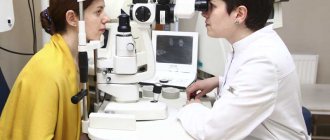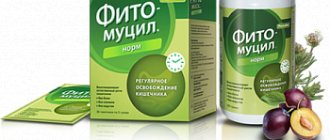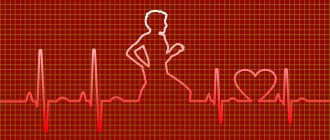The autumn-winter period traditionally marks the seasonal outbreak of ARVI (acute respiratory viral infection). This is a group of viral diseases that are transmitted from an infected person to a healthy person through personal contact or through surfaces in public places. Many people underestimate the seriousness of ARVI and believe that it is just a cold, which in any case will go away on its own. However, under no circumstances should you allow an infection to occur and leave it untreated, as this is fraught with complications.
At the first symptoms of acute respiratory viral infections and acute respiratory infections, you can make an appointment with a therapist at the Diagnostic and Treatment Center. Under the supervision of a doctor, the disease will pass easier and with fewer risks.
Definition of acute respiratory viral infections and acute respiratory infections and their differences
ARI is an acute respiratory disease, which, like ARVI, can occur with damage to the upper and lower respiratory tract, but can be caused not only by viruses, but also by any other pathogens. These can be bacteria, fungi, protozoa, etc.
Also, this condition can develop during hypothermia, excessive stress, heavy physical exertion, various chronic diseases - in other words, under any conditions when our immune system’s protective function decreases. With reduced immunity, pathogenic bacteria and viruses are activated.
ARVI and acute respiratory infections are united by an inflammatory process that develops in the upper respiratory tract ( tonsillitis , pharyngitis , rhinitis, sinusitis, laryngitis ) and can spread to the lower respiratory tract (tracheitis, bronchitis, pneumonia).
ARVI and acute respiratory infections affect both adults and children , regardless of social and living conditions.
Causes of ARVI
The first factor that leads to the disease ARVI, as noted above, is the entry into the body of a viral infection - influenza viruses (types A, B, C), parainfluenza, adenoviruses, rhinoviruses, reoviruses, respiratory syncytial virus (RSV), enteroviruses (Coxsackie), coronaviruses and others. Many of them die when dried out, disinfected, or ultraviolet irradiation; infections such as adenoviruses and reoviruses can remain indoors for a long time, not responding to normal preventive measures.
The second factor that leads to the development of ARVI is weakened immunity, which performs the body’s protective functions against those same infections.
The immune system is weakened mainly due to:
- poor-quality nutrition - lack of vitamins and microelements in food, as well as the consumption of unhealthful and unhealthy foods;
- hypothermia of the body;
- stress, which has a detrimental effect on the immune system no less than hypothermia;
- chronic diseases such as diabetes, ulcers, bronchitis, pneumonia, etc.;
- excessive intake of various medications;
- unfavorable environmental conditions in the place of residence or work.
How often do we get ARVI?
Acute respiratory viral infections (ARVI) are the most common form of acute diseases. Approximately 80-90% of residents of the Russian Federation fall ill with ARVI every year. And during epidemics, almost every person gets sick once or more1. And all over the world, according to the World Health Organization (WHO), every adult on average gets sick 2 to 4 times a year2.
This is due to the high contagiousness of viruses and their wide variety. Moreover, different viruses can change due to mutations and become more infectious.
What is the incubation period of ARVI?
This is the period of time from the moment the virus is introduced until the first clinical manifestations (symptoms) appear.
The incubation period for most ARVIs ranges from 2 to 7 days. For some viruses, this period can last from several hours to 2 days.
When the virus enters a cell of the body, it begins to actively multiply (actively replicate), capturing more and more new cells. A patient with ARVI is a source of infection from the first day of symptoms. Maximum virus shedding occurs on day 3 after infection and is accompanied by the most severe symptoms. Typically, 5 days after the onset of the disease, symptoms subside, including a decrease in viral shedding.
First aid for ARVI in adults
How to act immediately, without knowing for sure what virus caused the illness? – It seems optimal to choose a broad-spectrum antiviral drug. Etiotropic therapy includes drugs that have specific antiviral activity. One of these drugs that helps restore the immune system and has a wide spectrum of antiviral activity is the drug VIFERON. – This is an original broad-spectrum antiviral immunomodulatory drug that is used in children of all ages and adults, including pregnant women from the second trimester. Its uniqueness is due to its formula, which combines interferon alpha-2b and highly active antioxidants (ascorbic acid and alpha-tocopherol acetate). Antioxidants enhance the antiviral effect of interferon and also ensure longer circulation of interferon in the blood [1]. The drug has a wide range of uses for acute respiratory viral infections, including influenza and pneumonia. It has been proven to shorten the period of illness [2] and allows you to start antiviral treatment from the first symptoms of the disease.
Scheme of use of VIFERON 500,000 Suppositories
Suppositories VIFERON 500 thousand units. included in the complex therapy of ARVI and influenza. Used by children over 7 years of age and adults, including pregnant women from the 14th week of gestation, VIFERON 500,000 IU is prescribed 1 suppository 2 times a day after 12 hours every day for 5 days. According to clinical indications, therapy can be continued. The drug is not contraindicated in patients at risk for cardiovascular disease. Interferon alpha-2b in combination with antioxidants (VIFERON) is included in the Clinical Guidelines “Management of Patients with Acute Respiratory Infections on the Background of Chronic Cardiovascular Pathology”: “...randomized studies have shown the effectiveness of interferons in the treatment of acute respiratory infections. Human recombinant interferon alpha-2b (with antioxidants) does not cause any cardiovascular complications and does not interact with other drugs in this category of patients.”iv.
Effects of therapy
The use of the drug VIFERON suppositories contributes to:
- reducing the total duration of the disease (on average by 2 days);
- reducing the number of complications;
- increasing the level of sIgA on the surface of the mucous membrane of the respiratory tract;
- restoration of the ability of immunocompetent cells to produce interferon alpha;
- reducing the period of release of viral antigens, which leads to a reduction in the risk of ARI in contact persons (preventive effect), including superinfection in hospitalized patients.
Flu
Influenza is not a separate disease, but is part of the ARVI group.
Influenza is an acute infectious disease characterized by damage to the upper respiratory tract, as well as the lower respiratory tract, mainly the trachea. Manifested by high fever, severe catarrhal symptoms (cough, runny nose, sore throat, etc.).
Its special place among ARVI is due to the ability of the virus to undergo constant antigenic variability (mutation). The influenza virus is very active and is very easily and quickly transmitted from a sick person to a healthy person, especially in crowded places, including public transport, schools, boarding schools and kindergartens.
According to the WHO, every year between 3 and 5 million people worldwide fall ill with influenza. Unfortunately, in 250-500 thousand cases, influenza is fatal. During influenza epidemics, both adults and children become actively ill. People over 65 are especially vulnerable, with flu deaths being the highest among this population group. Epidemics can lead to a decrease in productivity in enterprises whose employees are absent from work due to illness, as well as a deterioration in the quality of education, as schoolchildren and students miss classes. During epidemics, the load on medical institutions increases, which affects the quality of medical services3.
Influenza can occur in mild to moderate forms, which end in complete recovery. But sometimes the development of various complications, the presence of severe chronic diseases of the heart, blood vessels, kidneys, and lungs can lead to the development of a severe form of the disease and, in some patients, to death4.
Patients with cancer, patients with severe immune disorders and pregnant women are most at risk of infection due to reduced immunity.
Influenza is transmitted by airborne droplets, when infection occurs when talking, coughing and sneezing, or by household contact, in which virus particles settle on common household items (toilet paper, door handles, dishes, children's toys).
The incubation period for influenza lasts about 2 days, but can vary from 1 to 4 days. Isolation of the virus from a sick person with an uncomplicated course of influenza lasts 5-7 days, with a complicated course - 10-14 days from the first day of the disease. A high temperature that persists for more than 5 days indicates the presence of bacterial complications.
Feeling unwell, fever and sore throat, many people go to the clinic. And to the question: “What do I have, doctor?” – they may hear the answer: ARVI, ARI or ARI. Many people wonder: is this the same diagnosis? After all, the symptoms of the disease are, in most cases, the same. Then why does the doctor prescribe antiviral drugs in one case, antibiotics in the second, and a regular throat treatment in the third? And what can you take in all these cases to reduce the incidence of colds? Let's figure it out together.
What are acute respiratory viral infections, acute respiratory infections and acute respiratory infections?
ARI (acute respiratory disease) is a condition caused by an infectious-inflammatory process in the respiratory tract that occurs for a variety of reasons. The most common are hypothermia, allergies, infection and decreased immunity due to stress, lack of vitamins, untreated chronic diseases and adverse environmental factors. Various acute respiratory infections have similar development mechanisms and many common symptoms. According to localization, acute respiratory infections are usually divided into diseases of the upper and lower respiratory tract. It is important to note that the diagnosis of “ARD” is often made when the exact nature of the respiratory system disease is not known in a person.
Infectious diseases of the upper respiratory tract include rhinitis, nasopharyngitis, pharyngitis, rhinosinusitis and sinusitis, tonsillitis, otitis media, epiglottitis. Tracheitis, bronchitis and pneumonia are diseases of the lower respiratory tract. Laryngitis occupies an intermediate position. All of these diseases can be caused by viruses, bacteria, fungi and parasites. Therefore, they are combined under the general term “ARI”, or “acute respiratory infection”.
Well, the name “ARVI”, or “acute respiratory viral infection”, speaks for itself. It means that the cause of the disease is viruses, and only viruses. Based on the totality of symptoms, an experienced specialist can distinguish not only the nature of the disease, but also the suspected pathogen. Laboratory diagnostic methods further clarify the picture. Hence the “different” diagnoses with seemingly similar symptoms. It should be noted that most often the cause (90% of cases) of inflammation in the respiratory tract is still an infection.
When are you more likely to catch a cold?
Every year, with the arrival of changeable autumn and cold winter weather, we are attacked by more than 200 types of viruses: coronaviruses, adenoviruses, influenza viruses, parainfluenza, etc. With reduced immunity, each virus can become a “conductor” of a bacterial infection. A noticeable surge in colds is also observed in the spring. Why is this happening?
The maximum prevalence of ARI in the autumn-spring, as well as winter months, is most often associated with hypothermia, which contributes to the development of these diseases. High-risk groups include children, the elderly, pregnant women, and people with chronic heart and lung diseases.
The source of infection is the sick person. Transmission of infection occurs through airborne droplets, as well as through contaminated hands or objects containing pathogens of respiratory infections. Therefore, if one person in a team or family has caught a cold, the rest should also take care.
Why does my throat often hurt when I have a cold?
This symptom most often appears due to damage to the mucous membrane of the oropharynx by various viruses and bacteria. It is the mucous membrane of the respiratory tract and throat that is the “entry gate” for pathogenic agents. Under the influence of viruses and bacteria, the mucous membrane of the nasal cavity is damaged and a large amount of mucus is released, which flows from the nasal cavity down the back wall of the pharynx and causes coughing, developing and maintaining local inflammation. The mucous membrane of the throat swells, turns red, and becomes painful. A sore throat also occurs due to inflammation of the mucous membrane of the pharynx and its drying out with difficulty in nasal breathing and breathing through the mouth. Therefore, complaints about a sore throat should be taken seriously and the disease should not be left to chance.
Currently, in treatment programs for acute respiratory infections, accompanied by pain and sore throat, much attention is paid to pharmaceutical herbal remedies developed on the basis of modern technologies. A good choice is Tonzilgon® N (manufactured by Bionorica, Germany). Tonsilgon N is a combined preparation of plant origin, which includes: extracts of chamomile, marshmallow, horsetail, oak bark, dandelion, yarrow and walnut leaves. Together, these herbs have immunomodulatory, anti-inflammatory and antiseptic effects. The use of the drug is also possible as an addition to therapy with antiviral or antibacterial agents.
The role of herbal medicine Tonsilgon N in acute respiratory infections
Children and adolescents suffer from acute respiratory infections 4-5 times more often than adults. This is explained by age-related imperfections of immunity and the peculiarities of the anatomy and physiology of the child. According to many medical specialists, the unstable functioning of the immune system, which is typical for children and adolescents, can be leveled out with the help of a course of taking specially developed herbal medicines. Tonsilgon N is one of these drugs. Considering that Tonsilgon N acts as an immunocorrector on the one hand and an antiseptic on the other, it is very effective in the treatment of acute and exacerbation of chronic diseases of the upper respiratory tract. It reduces the severity of acute respiratory infections and the frequency of exacerbations of chronic tonsillopharyngitis.
Considering all the properties of the drug Tonzilgon N, it can be recommended both as an independent treatment of respiratory diseases of the upper respiratory tract, acute tonsillopharyngitis, exacerbation of chronic tonsillitis and pharyngitis in children and adults, and as part of complex therapy. Its therapeutic and preventive effect on the mucous membrane of the throat can be useful in preventing complications of acute viral infections, especially in the difficult conditions of the COVID-19 pandemic.
What is important to know about Tonsilgon N?
Tonsilgon H provides a complex effect on the mucous membrane of the upper respiratory tract. Thanks to its balanced herbal composition, it is well tolerated. Tonsilgon N is used in the treatment of acute respiratory infections, accompanied by a sore and sore throat, difficulty swallowing, and cough. The drug is convenient to use. It is available in two dosage forms: as an aqueous-alcoholic extract (drops for oral administration) and film-coated tablets. Tonsilgon N in drops is indicated for children from 2 years old, and in tablets - from 6 years old. Both forms of the drug can be taken by adults. It is important that the alcohol content in the solution ranges from 16 to 19.5% vol. (one drop of the drug contains approximately 0.008 g of pure ethyl alcohol), which is not significant in terms of the child’s body weight and does not exceed the alcohol content in one package kefir Therefore, from this point of view, the drug is safe for children. Tonsilgon N is the No. 1 drug prescribed by pediatricians among all products. It is among the TOP 10 best-selling herbal preparations in Russia. Tonsilgon N has been successfully used for more than 50 years in Germany, 20 years in Russia and 18 years in Belarus.
How to take Tonsilgon N?
The use of Tonsilgon N reduces the likelihood of complications of acute respiratory infections and the development of recurrent colds. The drug has also proven itself in the treatment of complicated ARVI. Tonsilgon N plays an important role in the treatment of frequently ill children attending preschool and school institutions. Its use is very important in the autumn-spring period, when the risk of colds increases. Dosage regimen:
| Form of the drug | How to take for children | How to take for adults |
| Drops Contraindicated for children under 2 years of age! |
|
|
| Pills Contraindicated for children under 6 years of age! |
|
|
Tonsilgon N is an excellent remedy for sore throat and sore throat, which also helps prevent complications from acute respiratory infections. Take it so you don't get sick!
Literature:
1. O. I. Pikuza, E. V. Generalova, I. I. Zakirov. Herbal medicine in the rehabilitation of adolescents with recurrent respiratory diseases. "Medical Almanac" No. 3, 2008
2. ARVI in children during a difficult epidemiological situation. Interview with Professor of the Department of Otorhinolaryngology of the Medical Institute of RUDN University, Head of the Otorhinolaryngology Center “On-Clinic”, Doctor of Medical Sciences, Irina Mikhailovna Kirichenko. "Medical Council" No. 18, 2020
3. S. O. Klyuchnikov, O. V. Zaitseva, I. M. Osmanov, A. I. Krapivkin, E. S. Keshishyan, O. V. Blinova, O. V. Bystrova. Acute respiratory diseases in children. A manual for doctors. "Russian Bulletin of Perinatology and Pediatrics", Appendix No. 3, 2008
4. A. S. Milakova, V. V. Trubnikov. Scientific supervisor – Doctor of Medical Sciences V.S. Ledneva, Ph.D. E.D. Chertok. Choice of therapy for acute respiratory diseases in children on an outpatient basis. “Russian pediatric journal” (Russian journal) No. 22(5), 2019
5. Acute respiratory infections and influenza. Prevention.
6. O. A. Malyavko. ORI. What it is?
7. Instructions for medical use of Tonsilgon N for specialists
Symptoms of ARVI and influenza
The clinical picture of ARVI can vary greatly depending on the cause of the disease, the age of the patient, the state of the immune system and the presence of concomitant diseases.
Symptoms are divided into:
- Special symptoms of ARVI
- Specific Flu Symptoms
- Catarrhal phenomena
Special symptoms of ARVI:
- Gradual or acute onset of illness
- Moderate or mild intoxication
- Increased body temperature (up to 38.0 °C)
- Minor headache (not always)
- Aches in the muscles, sometimes in the joints, pain when moving the eyeballs or when pressing on them, lacrimation (as a rule, these symptoms are mild or may be absent)
- Runny nose, nasal congestion, sore throat, hoarseness
- Watery eyes, conjunctivitis
- With the development of an inflammatory process in the larynx, trachea or lungs, a dry and wet cough is possible5
Specific flu symptoms:
- Sudden onset of illness
- Severe intoxication
- High body temperature
- Strong headache
- Severe aches in muscles and joints
- Pain when moving the eyeballs
- Decreased appetite
- Dry cough due to the development of tracheitis at the beginning of the disease, but which after a few days becomes wet, with a large amount of mucous sputum
- Sore throat and sore throat, while runny nose is not very pronounced5
Catarrhal phenomena:
- runny nose (characterized by copious, watery, clear discharge)
- sneezing
- conjunctivitis (itching, watery eyes, red eyes)
- sore and burning sensation in the throat, pain and discomfort in the throat (these manifestations are characteristic of pharyngitis, tonsillitis, laryngitis)
- cough
Symptoms of ARVI and influenza
The world of viruses is very rich and diverse, and despite the common manifestations of symptoms, there are still some differences in clinical signs. It is these features that help the doctor more accurately determine the possible pathogen. Let's look at common viruses:
- Adenovirus infection
- Rhinoviruses
- Respiratory syncytial infection
- Enterovirus infection
- Coronavirus infection
Adenovirus infection
An acute infectious disease that affects the mucous membranes of the respiratory tract, organs of vision, intestines, and lymphoid tissue6.
Children and young people get sick more often. The incubation period lasts up to 14 days7. Main symptoms:
- rhinitis (runny nose) with copious mucous or watery discharge
- pharyngitis or tonsillitis
- conjunctivitis
- temperature increase 37-38°C and above
Possible manifestations of laryngitis, tracheitis, bronchitis, enlargement of several groups of lymph nodes, enlargement of the spleen and liver. Children may experience diarrhea and abdominal pain.
Rhinoviruses
An acute, highly contagious infectious disease.
The main and leading symptom is a runny nose (rhinitis) with very copious watery discharge. Main symptoms:
- severe rhinitis
- dry cough
- possible development of sinuses and otitis media
- sometimes the temperature rises to 37°C and slightly higher
In young children the disease is more severe than in adults. Complications are rare.
Respiratory syncytial infection
A disease characterized by fever and the development of bronchitis.
Children get sick more often, especially under 2 years of age. The incubation period lasts from 3-6 days. Main symptoms:
- constant paroxysmal dry cough, wet cough
- temperature rise to 37-38°C and above
- sneezing
- pharyngitis (rare)
Enterovirus infection
This is a group of acute infectious diseases caused by intestinal viruses and characterized by a variety of clinical courses8.
Most often children get sick. The incubation period lasts from 1 to 10 days. Main symptoms:
- sudden rise in temperature to 38-40°C
- headache, general malaise, dizziness, weakness
- nausea and vomiting
- phenomena of tonsillopharyngitis with the manifestation of a rash in the form of multiple red blisters on the arches and soft palate at the onset of the disease
- rhinitis
- dry or wet cough
- often combined with other syndromes - intestinal disorders, muscle pain
Coronavirus infection
This is a group of infectious diseases, in most cases it manifests itself as rhinitis with profuse watery discharge from the nose in the absence of symptoms of intoxication and fever, but with damage to the lower respiratory tract.
The incubation period is 1-14 days. Main symptoms:
- Mild course
- rhinitis
- temperature increase to 37-38°C
- headache, dizziness
- pain in muscles and joints
- pain in the eyeballs
Complicated course:
- temperature rise above 38°C
- dry cough
- dyspnea
- feeling of lack of air
- headache, dizziness
- pain in muscles and joints
- pain in the eyeballs
Intestinal manifestations in the form of abdominal pain, bloating, and diarrhea are possible.
In the majority of patients (80-90%), the disease ends in recovery.
Signs of depression and excitation of the central nervous system
| Sign* | CNS depression | Excitation of the central nervous system |
| General activity | reduced | the child is extremely irritable motor restlessness convulsions are possible |
| Sucking | sluggish | may not change or the baby refuses the breast/bottle |
| Scream | lethargic | piercing frequent |
| Dream | frequent difficult to wake up | shallow rare it's hard to fall asleep |
Catarrhal manifestations of the upper respiratory tract (runny nose, difficulty nasal breathing, sneezing, cough) may be absent.
Diagnosis of ARVI and colds
When the first symptoms appear, you should first consult a doctor. Only a doctor can distinguish ARVI from the flu or a common cold. The doctor also knows the epidemiological situation in the region and knows which virus is currently circulating among the population. The doctor carefully collects all information, including the presence of chronic diseases, how long the disease has been, possible contacts with a sick person, and the severity of symptoms. The throat is examined and the lungs are auscultated.
Which doctor should I see if I have a cold?
An initial consultation with a therapist is required. It may be necessary to examine other specialists, for example, an infectious disease specialist, an ENT specialist, an ophthalmologist. If this data is not enough, then laboratory tests can be performed.
Methods for clinical and laboratory diagnosis of respiratory infections include the following9:
- PCR diagnostics based on detection of RNA or DNA viruses
- immunofluorescence and enzyme immunoassay
- serological methods
- test for rapid diagnosis of influenza
- rapid diagnosis of beta-hemolytic streptococci
- microbiological cultures to determine the sensitivity of microflora to antimicrobial drugs.
The basic principle of diagnosing ARVI and influenza is to compare the general clinical picture of the disease (a set of complaints, symptoms) with the results of laboratory tests. The specialist should also take into account the epidemiological situation in the region, information about circulating strains of viruses, the emergence of new pathogens and mutations of viruses.
Treatment of ARVI and colds
It is worth starting with non-drug treatment methods.
Non-drug methods of treating acute respiratory viral infections and colds
The patient must be provided with:
- strict bed rest (in case of fever)
- plenty of warm drinks: this can be regular drinking water, warm tea with lemon, fruit drinks
- adequate intake of protein (meat, poultry), vegetables and fruits
- physical methods of reducing temperature10
It is especially recommended to ventilate the premises and change bed linen. You should avoid stuffy and dusty rooms. If possible, wet cleaning should be done.
Drug treatment of ARVI and colds
Drug treatment mainly consists of eliminating any severe symptoms: reducing fever, reducing headaches or sore throat, eliminating runny nose and nasal congestion, etc.
Antiviral therapy is prescribed when influenza is detected and should be started no later than 48 hours after the first symptoms appear. This is important to ensure the most effective therapeutic effect. The duration of use and dosage is adjusted by the doctor.
Antibacterial therapy is not used in the treatment of ARVI and influenza.
The antibiotic does not work against the virus. The use of antibiotics is only possible for the treatment of bacterial diseases or for the treatment of dissipating bacterial complications. Self-treatment with antibiotics for ARVI and influenza without a doctor's prescription is not recommended.
Local therapy
In the form of gargling with antiseptic solutions, drugs to reduce sore throat in the form of sprays and tablets are relevant for the development of an inflammatory process in the pharynx.
About the mode
Rest, bed rest and drinking plenty of fluids are recommended.
If the child is breastfed, then more frequent breastfeeding is advisable. You can offer water, as the need for liquid increases as the temperature rises.
If the baby is bottle-fed, then it is necessary to offer the baby regular drinks (water or baby teas) more often. Adding a fermented milk mixture to your diet, for example, Nutrilak Premium Fermented Milk, will facilitate the digestion process and maintain the balance of the microbiota, promoting a speedy recovery.
Children over 1.5-2 years old often experience a decrease in appetite, so children's drinks, for example, Nutrilak Premium 3 or 4, will be indispensable. They will support the baby's immune system and quickly restore his strength.
Prevention of respiratory diseases
A sick patient should reduce social contacts, especially with the elderly, pregnant women and people with chronic diseases. To reduce the risk of infection, you must follow a few simple rules:
- washing hands thoroughly with soap
- limiting contacts during epidemics: it is worth limiting close contact with a person who has catarrhal manifestations of ARVI (coughing, sneezing, runny nose)
- irrigating the nose with saline solutions after visiting public places (in the autumn-winter period, when the heating is on, dry air in the room negatively affects the nasal mucosa and it becomes more vulnerable to the penetration of various pathogens, and the use of saline solutions moisturizes the nasal mucosa)
- regular ventilation and wet cleaning of premises
- general strengthening methods, which include hardening, the use of vitamins and dietary supplements, the elimination of bad habits, and a healthy balanced diet help strengthen the immune system
Vaccination remains the most effective way to prevent influenza . The influenza vaccine protects the vaccinated person, even if the circulating viruses are not exactly the same as the vaccine viruses. Vaccination allows you to avoid a severe course of the disease and reduce the likelihood of complications and death. It is especially important to get vaccinated against influenza for people with chronic illnesses and people living with those at high risk11.









